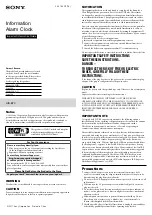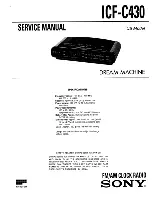
Document NO.:
GS
559A-39-001
Version: F
- 5 -
DEVELOP AND PRACTICE A PLAN OF
ESCAPE
• Install and maintain fire extinguishers on every level of the
home and in the kitchen, basement and garage. Know how
to use a fire extinguisher prior to an emergency.
• Make a floor plan indicating all doors and windows and at
least two escape routes from each room. Second story
windows may need a rope or chain ladder.
• Have a family meeting and discuss your escape plan,
showing everyone what to do in case of fire.
• Determine a place outside your home where you all can
meet if a fire occurs.
• Familiarize everyone with the sound of the smoke alarm
and train them to leave your home when they hear it.
• Practice a fire drill at least every six months, including fire
drills at night. Ensure that small children hear the alarm
and wake when it sounds. They must wake up in order to
execute the escape plan. Practice allows all occupants to
test your plan before an emergency. You may not be able to
reach your children. It is important they know what to do.
• Current studies have shown smoke alarms may not awaken
all sleeping individuals, and that it is the responsibility of
individuals in the household that are capable of assisting
others to provide assistance to those who may not be
awakened by the alarm sound, or to those who may be
incapable of safely evacuating the area unassisted.
•
•
RECOMMENDED LOCATIONS FOR
ALARMS
• Locate the first alarm in the immediate area of the
bedrooms. Try to monitor the exit path as the bedrooms are
usually farthest from the exit. If more than one sleeping
area exists, locate additional alarms in each sleeping area.
• Locate at least one alarm on every floor level.
• Locate an alarm in every bedroom.
• Locate an alarm in every room where electrical appliances
are operated (i.e. portable heaters or humidifiers).
• Locate an alarm in every room where someone sleeps with
the door closed. The closed door may prevent an alarm not
located in that room from waking the sleeper.
• Smoke, heat, and burning things will spread horizontally
after rising to the ceiling, so install the alarm on middle of
the ceiling of ordinary structure house. let the alarm induce
every corner.
• Not recommend to use for MOBILE HOME
• For single floor plan and multiple floor plan, please refer to
diagram 2 and diagram 3.
• If alarm couldn’t be installed in the middle of the ceiling
for some reasons, the distance which the alarm away from
the wall corner should be beyond 50cm. (see the diagram
4).
• If the length of the room or the hall is beyond 30 feet, you
need install several alarms in the hall.
• When the ceiling is slanting, the alarm needs to be installed
500mm away from the highest ceiling point in the room
(see the diagram5).
Diagram 2
MULTIPLE FLOOR PLAN
Diagram 3

























